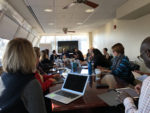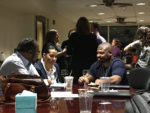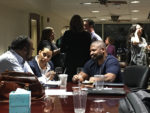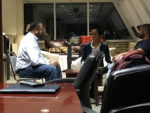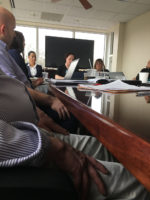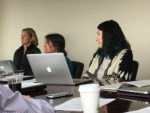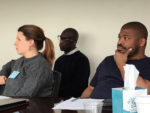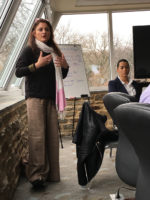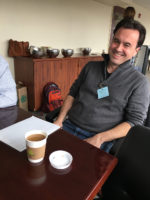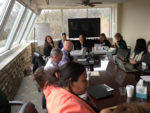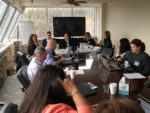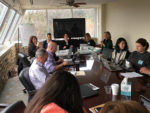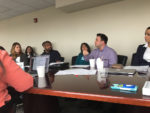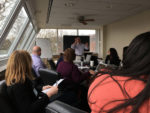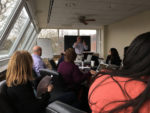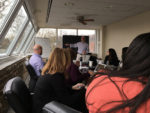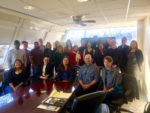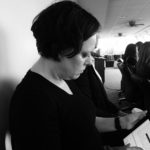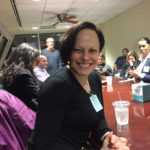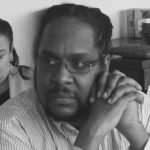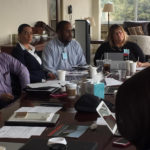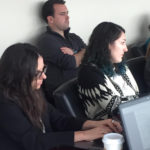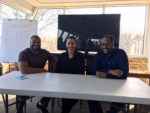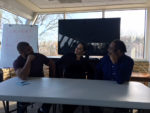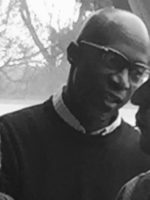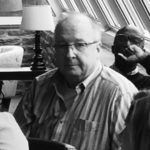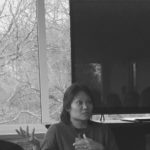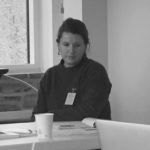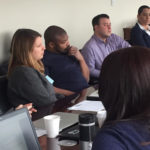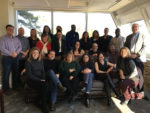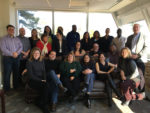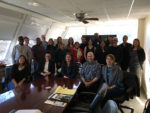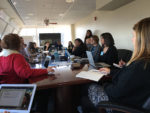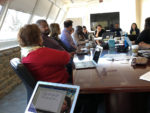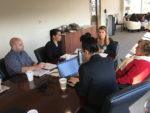Marriottsville, MD – Inspired by the Lasallian principle of together and by association, and cognizant of and grateful for our pluri-religious and interfaith realities, the January 2018 Colloquy (Jan. 31 – Feb. 2) sought to provide space for educators from the Lasallian Association of Colleges and Universities (LACU) of the Lasallian Region of North America (RELAN) to further explore the intersection of:
- racial justice, diversity, inclusivity, and related concerns;
- the wide Catholic intellectual and social teaching traditions;
- and our shared Lasallian educational mission and heritage.
“The Colloquy continues to be a new, exciting space for LACU,” said Br. Ernest Miller, FSC, Vice President for Mission at La Salle University in Philadelphia, PA. “It is an opportunity for Lasallian educators in higher education to foster conversation on themes and topics pertinent to our 21st century context, and how do we respond within a Lasallian praxis. The Colloquy is providing space to discern and discuss bridging Lasallian thought with varied disciplinary theories and concepts, to bring to bear a Lasallian perspective on racial justice, for example. The hope is that the Colloquy’s activities will ignite movement towards a stronger LACU.”
Building upon the work of the January 2017 Lasallian Higher Education Colloquy on Racial Justice and the “Lasallian Mission Mandated Racial Justice Vision Statement,” participants in the January 2018 Colloquy were invited to further explore and discuss racial justice from an array of disciplinary perspectives: education, history, literature, philosophy, public health, sociology, and theology, among others. From conversations and reflection, Colloquy participants worked to achieve new horizons in Lasallian thought and practice with a particular focus on classrooms and the students entrusted to the Lasallian mission.
Meet the Colloquy Participants from around the Lasallian Region of North America >
Reflections and Thoughts on moving forward from the Colloquy, offered by:
Mehnaz Afridi, PhD – Associate Professor – Manhattan College
 The is the last sermon that Prophet Muhammad (PBUH) delivered at Mount Arafat 632.
The is the last sermon that Prophet Muhammad (PBUH) delivered at Mount Arafat 632.
“All mankind is from Adam and Eve. An Arab has no superiority over a non-Arab, nor does a non-Arab have any superiority over an Arab; a white has no superiority over a black, nor does a black have any superiority over a white; [none have superiority over another] except by piety and good action. Learn that every Muslim is a brother to every Muslim and that the Muslims constitute one brotherhood. Nothing shall be legitimate to a Muslim which belongs to a fellow Muslim unless it was given freely and willingly. Do not, therefore, do injustice to yourselves”.
What does it mean to be a Muslim Lasallian?
For me it has been inclusion and acceptance as Muslim, the respect and care that the Lasallian mission has offered. What it means to be part of an Inclusive Community? Our community celebrates diversity and welcomes all members to our vibrant community. Manhattan College is passionately committed to policies of non-discrimination and we actively encourage an open-minded staff and student body. We’re committed to civil rights and freedom of expression for all people. We believe in combating all and any racism against any people —we are committed to making all our students feel included and we embrace each difference with care and sensitivity. We believe that Inclusion is a right and not just a privilege for a select few. At the Faculty Colloquy where I was fortunate enough to be a lead faculty, I realized how many of my colleagues across schools were doing amazing things from teaching, spiritual exercises and training that was not only about students but how to include others in the whole community. When I heard that my colleagues were distraught about the climate on campus or the inequality in society whether about dreamers, women, transgender— the categories widened but fell into one place: Equality for all and especially race. So many issue fell into the category of race and the bottom line was if we cannot accept people of different “colors” then how can we deal with all these other issues?
How to move forward:
The most important tool that i brought back with me was the memory of my colleagues sitting together at the end of the colloquy. It was silent and we were to silently reflect. There was a moment where i was in pain form hearing the injustices that go on in society and the elation within me was hope. The hope that my colleagues across schools were courageous, relentless and sincere in their pedagogical efforts as Martin Luther King has stated: “An individual has not started living until he/she can rise above the narrow confines of his individualistic concern to the broader concern of all humanity.” I will take this with me.
Practical tools:
I learned so much form others like surveys, documents in educational curriculum and how to approach sensitive issues in the classroom. Above all, I took copious notes of how one can approach racial justice issues through different models of teaching that let the student make the conclusions and act accordingly. One example was the useful and brilliant date analysis on how we see American racially and religiously.
Jeffrey J. Sable, PhD – Associate Professor – Christian Brothers University
I consider myself very fortunate that I have been asked to participate in both of the Racial Justice Colloquies. In many ways, the significance for me is rooted in the challenges given to us by Father Bryan Massingale at the first Colloquy in 2017. I’m paraphrasing and editorializing heavily, but De La Salle pushed for social justice in education and this had an impact on both his students and his culture. The FSCs changed the culture of France and beyond. We have a responsibility, rooted in the acts of De La Salle, to push aggressively for social justice–for justice across races and ethnicities. Because we are educators, we are in a unique position to pursue this justice on our campuses and to work to provide such an environment for our students. However, this also puts us in a position to instill this sense of justice in our students–to make it part of them for (we hope) the rest of their lives. This is what really changes the culture. To borrow from a saying about fishing, we need to both provide our students with a racially just environment and to teach them to work toward that environment wherever they are. In this effort, we can’t afford to wait for detailed guidance from religions or governments any more than De La Salle could. That’s what makes these colloquies, and what grows out of them, so significant.
How will I call on fellow Lasallians at CBU? To be honest, I’m still trying to figure out some of those details. One way is simple, on a daily basis, try my best to remember to be aware of the living vision statement that we’ve drafted and to try to keep working on it–even if it’s in small ways and with individual students or other colleagues.
One thing that has really stuck with me from the Colloquy came during a discussion in a small group about how we can make this effort visible very literally on our campuses. Brother Jack came up with the idea of making t-shirts that show symbols of the presence of God. For Catholics, this is the tabernacle lamp. That is a symbol to Catholics that God is presence in a very real way. What such symbols or indicators exist in other faiths? Put those on a shirt that people can wear to remind us that God is present within them. To me, that would be such a powerful and visible statement. It is not specifically racial, but it would be a visible reminder of the inherent preciousness of each person.
Another area is related to assessment and job performance. I believe it was my CBU colleague, Cory Major, who pointed out (in a much more gentle way) that we pay lip service to our Lasallian values, but there really is no tangible consequence for showing those values in our jobs. There’s nothing in our student evaluations of teaching about teaching students about anything related to our mission. There’s no incentive to do research that aligns with the four Lasallian research themes. I recently began acknowledging in my syllabi what the Lasallian mission means to me in the classroom. It would be great for things like that to be recognized and to become part of our culture in a way that is more concrete than just rhetorical.
Jeffrey T. Trask, PhD – Assistant Professor – Lewis University
As a person that has experienced life in both African-American communities and predominately white institutions (my entire life), this colloquy was refreshing as it included people that either understood or were sympathetic to the difficulties I face as an African-American male – in general and in higher education. Being able to be myself and express my opinions and thoughts is vital for me. I usually say that it is one thing to be pained, and another thing altogether for no one to acknowledge your pain. For me, the colloquy was a place I had my pain acknowledged and therefore, made it easier to build relationships with others that share the same passion for racial and social justice. This was particularly highlighted in the acceptance of a skit that me and two other African-Americans did at the retreat. In the skit, we had the opportunity, in a comical way, to express the challenges we face. The groups acceptance and affirmation after the skit speaks volumes about the people participating in the colloquy who seek to build racial and social justice in each of their Lasallian institutions.
Starting a Movement:
Although we treat racial issues as static, periodic occurrences, often prompted by a tragic racially charged incident (like a police officer shooting an African-American male and subsequently not facing any consequences), racial and social justice is a second by second issue that needs constant attention. My hope is that we can raise awareness and reach a critical mass of faculty and staff that does not see racial and social justice as an add on to their jobs, but something we all have to live by daily. I believe having faculty from our respective institutions attend the colloquy can create that critical mass. I use the term critical mass because when the majority of people want something to happen, it happens. There is strength in numbers and moving the justice needle definitely takes numbers.
In addition to having as many faculty and staff as possible experience a colloquy, I also plan on engaging faculty (as a faculty member) in discussions centered around racial justice. Part of our 2018 colloquy included developing a toolbox of resources any faculty member could use to address all types of questions and issues related to diversity, racial justice, and inclusion that surface in their classrooms. I hope to make this toolbox available to all faculty at my institution.
Other reactions from participants
- “My work is about race and inequality”
- “I want my students to be activists”
- “How do students use the classroom for their whole person?”
- “How do we bring the mission to faculty and staff so our students can feel loved”
- “Our salvation is tied up with our students”
- “I don’t just talk the talk but walk the walk”
- “Students are not flat beings”
- “Let’s own it and bring it to the ground”
- “Agents of social change”
- “Transforming and changing the status quo”
- No assumptions should be made about race and knowledge.
- Are we as faculty also not implicated in these issues as much as the racial divide?
- Shouldn’t all our schools add to the voices of the vulnerable?
- What are we called? – Lasallian Affiliates for Racial Justice
- What do we do? – We are Lasallian educators working in partnership with mission officers to foster anti-racism and inclusive communities through the management of shared funding and resources to support:
- the development of curricular and co-curricular programming in collaboration with academic and student life;
- the production of scholarship on teaching and learning in a Lasallian key;
- cultural and institutional transformation on Lasallian campuses by mentoring relevant faculty and student groups; and
- an annual colloquium on racial justice in Lasallian education.
Working across campuses to improve our labors on each individual campus, the Lasallian Affiliates help educators and students to translate Lasallian core principles in the context of ongoing racial injustice.
2018 Colloquy Planning Team
- Chip Gallagher
- Mehnaz Afridi
- Jeff Trask
- Brother Ernest Miller
- Brother Jack Curran
- Maureen O’Connell
- Jeff Sable


